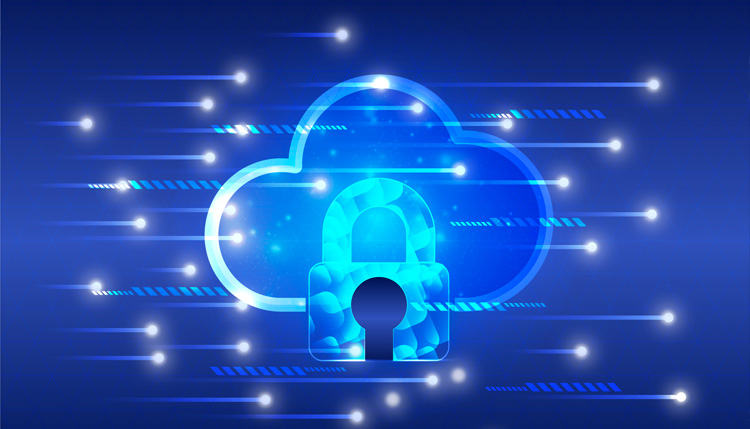
Last updated on July 4, 2024
Best Practices of Cloud Security
Cloud computing is crucial for businesses seeking scalability, flexibility, and cost efficiency in the digital age. However, increased cloud adoption raises security concerns. Ensuring cloud security is essential to protect data, maintain compliance, and uphold reputation. This guide outlines best practices for safeguarding your cloud environment.
Understand Shared Responsibility Model
The shared responsibility model is a key aspect of cloud security. It defines the security obligations of the cloud service provider (CSP) and the customer. CSPs secure the cloud infrastructure, while customers must secure their data, applications, and access controls. Clarity on these responsibilities is crucial to avoid security gaps.
Implement Strong Identity and Access Management (IAM)
Effective IAM is the cornerstone of cloud security. It involves:
- Multi-Factor Authentication (MFA):Implementing multi-factor authentication (MFA) adds an extra security layer, requiring users to provide two or more verification factors to access.
- Role-Based Access Control (RBAC): Granting permissions based on user roles limits access to necessary resources.
- Regular Access Reviews: Regularly reviewing and updating access permissions helps revoke unnecessary privileges and minimize insider threats.
Encrypt Data at Rest and in Transit
Encryption is vital for protecting sensitive data. Encrypting data at rest and in transit ensures intercepted or accessed data remains unintelligible to unauthorized parties. Use strong encryption protocols and manage encryption keys securely.
Regularly Update and Patch Systems
Outdated systems are vulnerable to security exploits. Regularly updating cloud services, operating systems, and applications is critical to protect against known vulnerabilities. Automated patch management can streamline this process and reduce the risk of human error.
Monitor and Log Cloud Activity
Continuously monitor and log cloud activity to gain visibility and detect security issues. Implement comprehensive logging and monitoring to track access, network traffic, and system changes. Use SIEM tools to aggregate and analyze log data for proactive threat detection.
Implement Strong Network Security
Network security measures are essential to protect your cloud environment from external threats. Key practices include:
- Firewalls: Deploy firewalls to control and monitor network traffic based on security rules.
- Virtual Private Networks (VPNs): Use VPNs to securely access cloud resources and encrypt communication channels.
- Intrusion Detection and Prevention Systems (IDPS):Implement IDPS to detect and prevent unauthorized access and malicious activities.
Backup and Disaster Recovery
Data loss can occur due to cyber-attacks, hardware failures, or human error. Regularly backing up data and having a disaster recovery plan ensures business continuity if an incident occurs. Periodically test backup and recovery processes to ensure their effectiveness.
Ensure Compliance with Regulations
Compliance with industry regulations (e. g., GDPR, HIPAA, PCI-DSS) is a legal requirement and best practice for cloud security. Understand the relevant regulations and implement necessary controls to ensure compliance. Regular audits can help identify gaps and maintain regulatory standards.
Educate and Train Employees
Employee education and training on cloud security best practices can reduce the risk of security breaches caused by human error. Conduct regular security awareness programs, simulate phishing attacks, and provide guidelines on handling sensitive data and recognizing threats.
Utilize Security Frameworks and Standards
Established security frameworks and standards can guide cloud security efforts. Frameworks like NIST, ISO/IEC 27001, and CSA’s Cloud Controls Matrix provide comprehensive guidelines for implementing and managing cloud security. Adopting these frameworks can help ensure a robust security posture.
Manage Third-Party Risks
Organizations often use third-party cloud services. Assessing and managing third-party risks is crucial to ensure vendors meet your security requirements. Conduct thorough due diligence before engaging third-party providers, and regularly review their security and compliance.
Establish Incident Response Plans
Even with robust security, incidents can still occur. A well-defined incident response plan ensures quick, effective response to breaches. Your plan should include procedures for identifying, containing, eradicating, and recovering from incidents. Regularly test and update the plan to adapt to evolving threats.
Implement Zero Trust Architecture
The Zero Trust security model operates on “never trust, always verify.” This assumes threats exist both outside and inside the network, requiring strict identity verification for all access attempts. Implementing Zero Trust principles, like micro-segmentation, continuous authentication, and least privilege access, can enhance cloud security.
Regular Security Assessments and Penetration Testing
Regular security assessments and penetration testing help identify cloud vulnerabilities. These simulate attacks to evaluate security controls and provide remediation insights. Engage certified professionals to perform these tests and address issues promptly.
Maintain Security Hygiene
Maintaining good security hygiene involves regularly reviewing and updating your security policies, configurations, and practices. This includes:
- Reviewing Security Policies: Keep your security policies current with best practices and regulations.
- Securing Configurations: Regularly review and secure cloud configurations to prevent misconfigurations and security breaches.
- Decommissioning Unused Resources: Remove unused or obsolete resources to minimize attack surface.
Conclusion
As cloud computing transforms business operations, robust cloud security is crucial. By implementing best practices, organizations can protect cloud environments, safeguard data, and maintain compliance. Cloud security is an ongoing process requiring vigilance, updates, and proactive measures to address evolving threats. Prioritizing cloud security allows businesses to leverage the full potential of cloud computing while mitigating risks and maintaining trust. For more information, please visit www.blancoinfotech.com.






